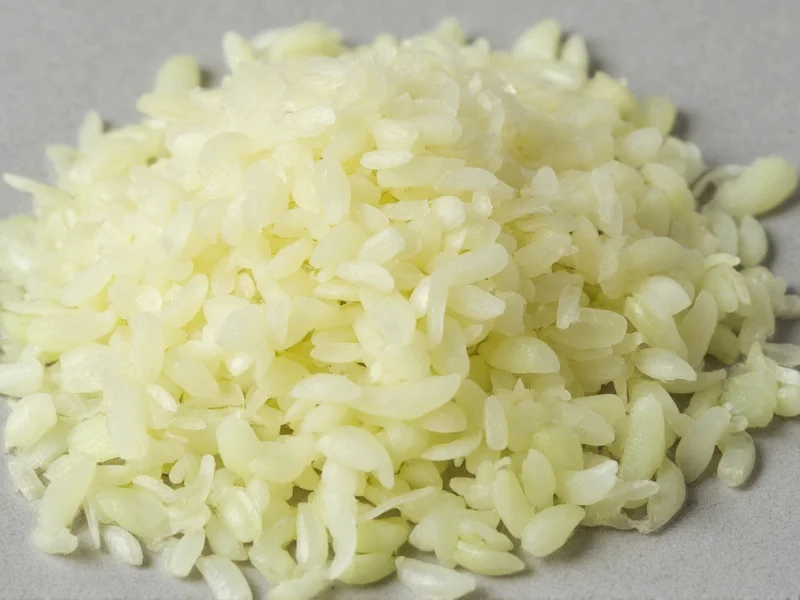Understanding the unique properties of onion granules can transform your cooking experience. These pantry staples bridge the gap between onion powder and flakes, offering a distinctive texture that affects both flavor dispersion and visual appeal in finished dishes. Professional chefs and home cooks increasingly recognize onion granules as an essential ingredient for consistent results.
What Exactly Are Onion Granules?
Onion granules represent a specific processing stage in dehydrated onion production. Manufacturers dehydrate fresh onions, then grind them to a precise particle size between 0.5-1.5 millimeters. This intermediate texture distinguishes them from both onion powder (finely ground to dust) and onion flakes (larger, flake-like pieces).
The production process preserves more of the onion's natural cellular structure compared to powder. This structural difference creates a slower flavor release when cooking, preventing the sharp, immediate onion punch that sometimes overwhelms dishes. The granular form also provides subtle textural elements that can enhance certain recipes.
Onion Granules vs Powder: Key Differences
Many home cooks confuse onion granules with onion powder, but their culinary applications differ significantly. The primary distinction lies in particle size and resulting behavior during cooking:
| Characteristic | Onion Granules | Onion Powder |
|---|---|---|
| Particle Size | 0.5-1.5mm (visible granules) | Fine powder (dust-like) |
| Flavor Release | Gradual, sustained flavor | Immediate, intense flavor |
| Texture Contribution | Subtle texture in finished dish | No texture contribution |
| Best Cooking Methods | Dry rubs, slow cooking, sauces | Quick sauces, dressings, batters |
| Measurement Precision | More forgiving measurements | Requires precise measurements |
Optimal Culinary Applications for Onion Granules
Chefs prefer onion granules for specific applications where their unique properties shine. The granular texture makes them particularly valuable for dry rubs, where they adhere better to meat surfaces than powder while providing visual appeal. When making spice blends, granules distribute more evenly without clumping.
For slow-cooked dishes like stews, soups, and braises, onion granules offer consistent flavor throughout the cooking process. Unlike fresh onions that break down completely, granules maintain their identity while gradually releasing flavor. This creates a more layered onion presence in the final dish.
Baked goods benefit from onion granules' controlled moisture release. Unlike fresh onions that introduce excess water, granules incorporate seamlessly into breads, biscuits, and savory pastries without affecting dough consistency.
Precise Substitution Guidelines
Understanding proper substitution ratios prevents flavor imbalances in your recipes. When replacing fresh onions with granules, use this reliable conversion:
- 1 tablespoon fresh minced onion = 1 teaspoon onion granules
- 1 small fresh onion (¼ cup minced) = 1½ tablespoons onion granules
- 1 medium fresh onion (½ cup minced) = 1 tablespoon onion granules
When substituting between dehydrated forms:
- 1 teaspoon onion granules = ¾ teaspoon onion powder (use less powder)
- 1 teaspoon onion powder = 1¼ teaspoons onion granules (use more granules)
Always remember that onion powder delivers more concentrated flavor due to its finer particle size and greater surface area. When converting recipes, start with less powder than granules and adjust to taste.
Storage Best Practices for Maximum Freshness
Proper storage maintains the flavor integrity of onion granules. Store them in airtight containers away from light, heat, and moisture. Glass jars with tight-sealing lids work better than plastic containers, which can absorb odors. For extended storage beyond six months, consider refrigeration in moisture-proof containers.
Check freshness by scent and color. Fresh granules should have a clean, sharp onion aroma without any mustiness. Their color should remain consistent—darker granules often indicate age or improper storage. Properly stored onion granules maintain optimal flavor for 12-18 months.
Nutritional Profile and Health Considerations
Dehydration concentrates certain compounds while removing water content. Onion granules contain higher concentrations of quercetin and other beneficial compounds per volume compared to fresh onions. However, they also have more sodium content when processed with anti-caking agents.
For low-sodium diets, seek brands without added salt or anti-caking agents. The dehydration process preserves most beneficial compounds, though some heat-sensitive nutrients diminish during processing. Onion granules remain a convenient way to incorporate onion's health benefits into daily cooking without waste.
Professional Chef Recommendations
Top chefs recommend toasting onion granules briefly in dry pans before use to enhance their natural sweetness. This simple technique develops deeper flavor complexity without additional ingredients. For salad dressings and cold applications, rehydrate granules in a small amount of warm water or vinegar for 10 minutes before incorporating.
When making meatloaf or meatballs, chefs often combine granules with a touch of water to create a paste that distributes evenly through the mixture. This prevents the concentrated flavor pockets that sometimes occur with powder while ensuring consistent onion flavor throughout.











 浙公网安备
33010002000092号
浙公网安备
33010002000092号 浙B2-20120091-4
浙B2-20120091-4